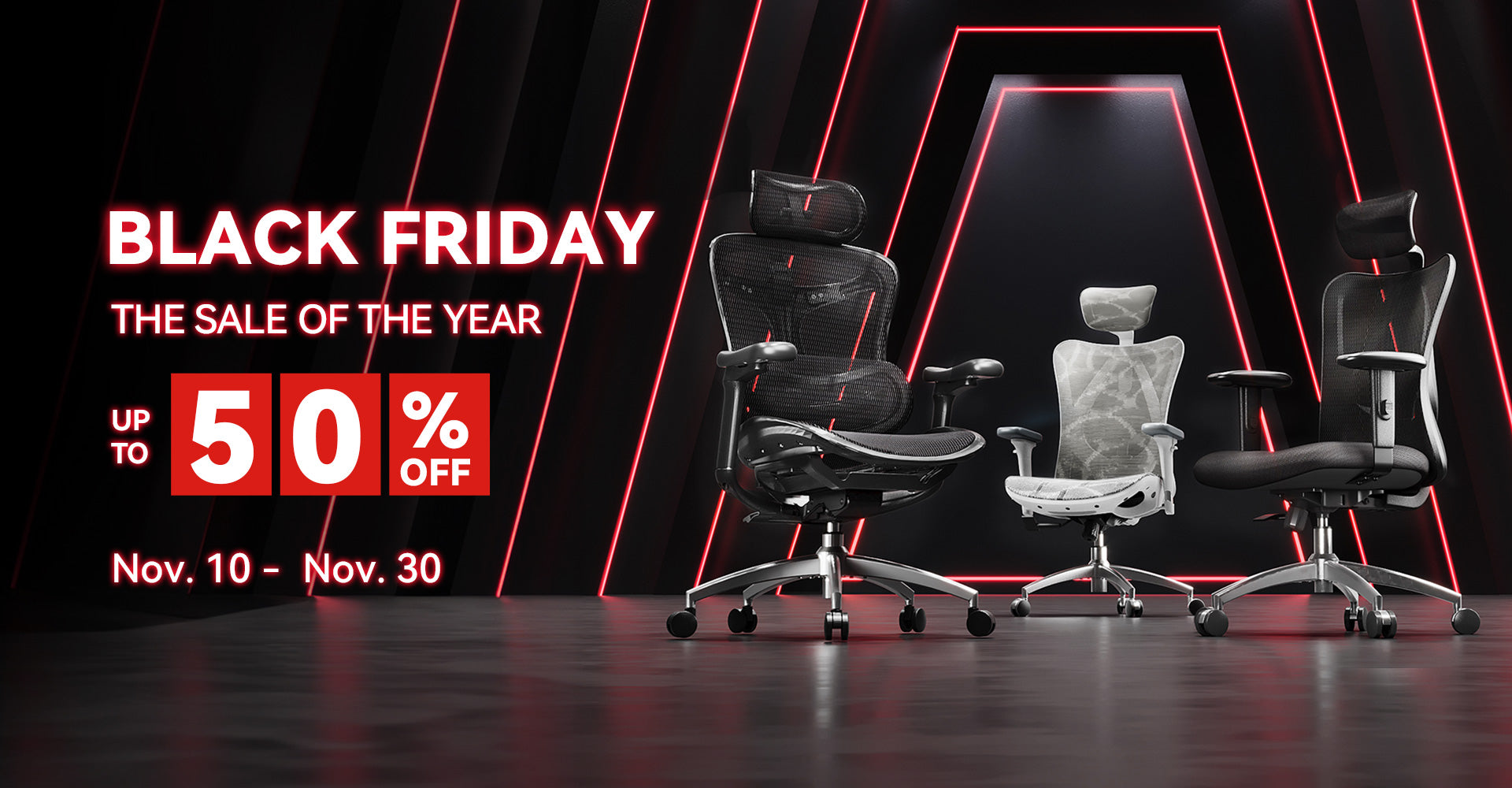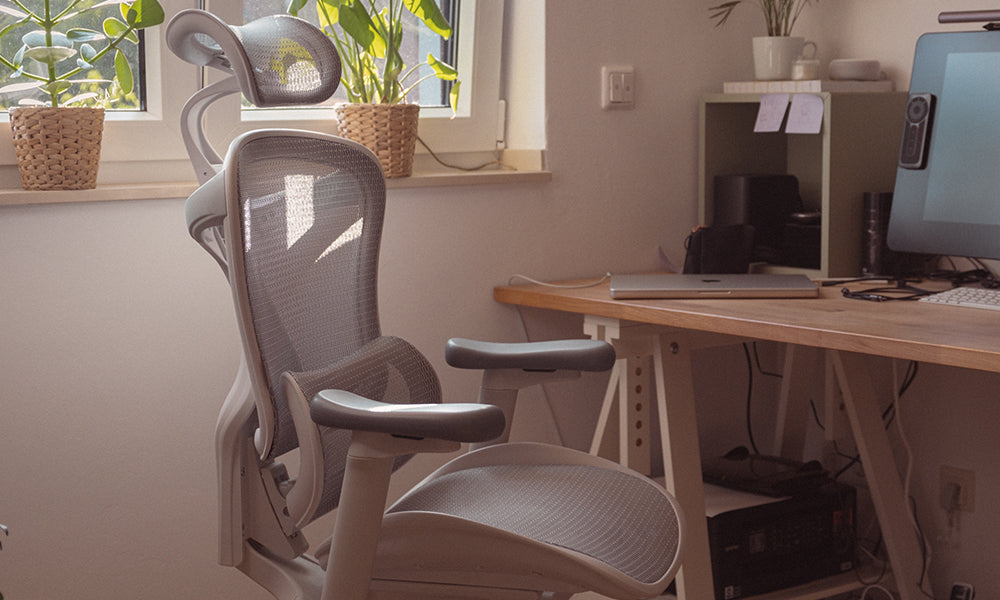Employers and employees alike are constantly seeking ways to boost efficiency and get more done in less time. While many factors contribute to productivity, one that is often overlooked is the office chair. Can your choice of seating actually make you more productive? The answer might surprise you.
In this article, we'll delve into the fascinating world of office chair ergonomics and explore the science behind how the right chair can improve your productivity. From reducing discomfort and fatigue to promoting better focus, we'll cover all the essential aspects that can help you choose the perfect office chair for a more productive workday.
The Science of Ergonomics
Ergonomics is the science of designing products, systems, and environments to fit the needs and capabilities of the people who use them. In the context of office chairs, ergonomics refers to creating a chair that provides the maximum comfort and support to its user while minimizing the risk of discomfort, pain, or injury. Ergonomically designed office chairs are specifically engineered to accommodate the natural movements and postures of the human body.
So, how does this science translate into increased productivity? Let's explore the key ways in which an ergonomic office chair can positively impact your workday:
Enhanced Comfort
Comfort is paramount when it comes to office chairs. An uncomfortable chair can lead to constant shifting, fidgeting, and frequent breaks, which can significantly disrupt your workflow. Ergonomically designed chairs are built with features such as adjustable lumbar support, padded armrests, and contoured seats to maximize your comfort, reducing the need for constant adjustments and distractions.
Reduced Discomfort and Pain
Prolonged sitting in a poorly designed chair can lead to various discomforts, including back pain, neck pain, and even headaches. These physical discomforts can significantly hamper your ability to focus and complete tasks. Ergonomic chairs are designed to alleviate these issues by providing the necessary support and promoting proper posture, reducing the risk of discomfort and pain.
Improved Posture
A common issue in the workplace is poor posture. Hunching over a desk or slouching in an inadequate chair can lead to back problems and muscle strain. Ergonomic chairs encourage better posture by providing lumbar support, adjustable seat height, and backrest recline options. Maintaining a correct sitting posture can lead to increased comfort and less strain, allowing you to work more efficiently.
Increased Focus
When you're comfortable and free from physical discomfort, you can better direct your mental energy towards your work. An ergonomic office chair enables you to concentrate on the task at hand, rather than constantly adjusting your position or trying to find a comfortable spot in an uncomfortable chair. As a result, your ability to focus and maintain attention on your work improves, contributing to increased productivity.
Enhanced Blood Circulation
Sitting for long hours can lead to poor blood circulation, which can cause fatigue and decreased alertness. Ergonomic chairs often include features like a waterfall seat edge, which promotes better blood flow in your legs. Improved circulation means you're more likely to stay alert and focused, even during extended periods of work.
Reducing the Risk of Musculoskeletal Disorders
Sitting in an ill-suited chair for extended periods can lead to musculoskeletal disorders, such as carpal tunnel syndrome or repetitive strain injuries. Ergonomic chairs are designed to mitigate these risks by offering proper support for your wrists, arms, and shoulders. By reducing the likelihood of these disorders, you're less likely to be sidelined by pain or discomfort.
Customizability
Everyone's body is unique, so a one-size-fits-all approach to office chairs is often insufficient. Ergonomic chairs are designed with customizability in mind. You can adjust the chair's height, armrests, backrest, and other features to match your body's needs. This personalization ensures that the chair fits you perfectly, further enhancing your comfort and productivity.
Case Studies: Real-World Results
The impact of ergonomic chairs on productivity isn't just theoretical; it's supported by numerous case studies and real-world examples. Here are a few instances that demonstrate the positive effects of using ergonomic chairs in various professional settings:
- Call Centers: Call center employees typically spend long hours sitting at their desks, handling numerous phone calls and data entry tasks. A study conducted by the Cornell Human Factors and Ergonomics Research Group found that employees using ergonomic chairs reported significantly lower discomfort levels and were able to handle more calls in a day compared to those using standard chairs.
- Office Environments: In a case study conducted by the National Institute for Occupational Safety and Health (NIOSH), office workers who used ergonomic chairs reported a 17.7% increase in productivity compared to those using non-ergonomic chairs. The ergonomic chair users also reported lower levels of discomfort and pain.
- Creative and Design Studios: Employees in creative and design fields often require high levels of concentration and focus. A study published in the Journal of Occupational and Environmental Medicine found that graphic designers using ergonomic chairs experienced a 16% increase in productivity and a decrease in the number of errors made.
Choosing the Right Ergonomic Office Chair
Now that we understand the positive impact of ergonomic office chairs on productivity, it's essential to know how to select the right chair for your specific needs. Here are some key factors to consider when making your choice:
- Lumbar Support: Look for a chair that provides adjustable lumbar support, allowing you to tailor it to your lower back's natural curve. This feature helps maintain proper posture and minimizes discomfort.
- Seat Depth and Width: Choose a chair with a seat that's deep and wide enough to accommodate your body comfortably. You should be able to sit all the way back in the chair with a few inches of space between the edge of the seat and the back of your knees.
- Adjustability: The chair should offer multiple adjustment options, including seat height, armrest height, and backrest recline. The more customizable the chair, the better it can cater to your individual preferences and needs.
- Material and Padding: Pay attention to the materials used in the chair's construction. Breathable, high-quality fabric or leather, combined with adequate padding, will contribute to your overall comfort.
- Swivel and Mobility: Ensure the chair has a 360-degree swivel and moves smoothly across the floor. Easy mobility allows you to reach different areas of your workspace without straining or getting up constantly.
- Weight Capacity: Consider the chair's weight capacity to ensure it can safely accommodate your body weight. Oversized or bariatric chairs are available for individuals requiring additional support.
- Warranty and Durability: Check for a manufacturer's warranty, as it can be an indicator of the chair's build quality and durability. A chair with a more extended warranty is often a safer investment.
Conclusion
In the quest for increased productivity, an often overlooked but essential element of the workplace is the office chair. Your choice of seating can have a substantial impact on your comfort, focus, and overall well-being. Ergonomically designed office chairs, with their tailored support and comfort features, can lead to significant improvements in your work output.
Investing in the right office chair is an investment in your productivity and long-term health. By reducing discomfort, promoting better posture, and minimizing the risk of musculoskeletal disorders, an ergonomic office chair can pave the way for a more efficient and enjoyable workday. Whether you work in a traditional office, a home office, or a remote setting, the benefits of an ergonomic chair are universally applicable.






Commenta
Questo sito è protetto da hCaptcha e applica le Norme sulla privacy e i Termini di servizio di hCaptcha.